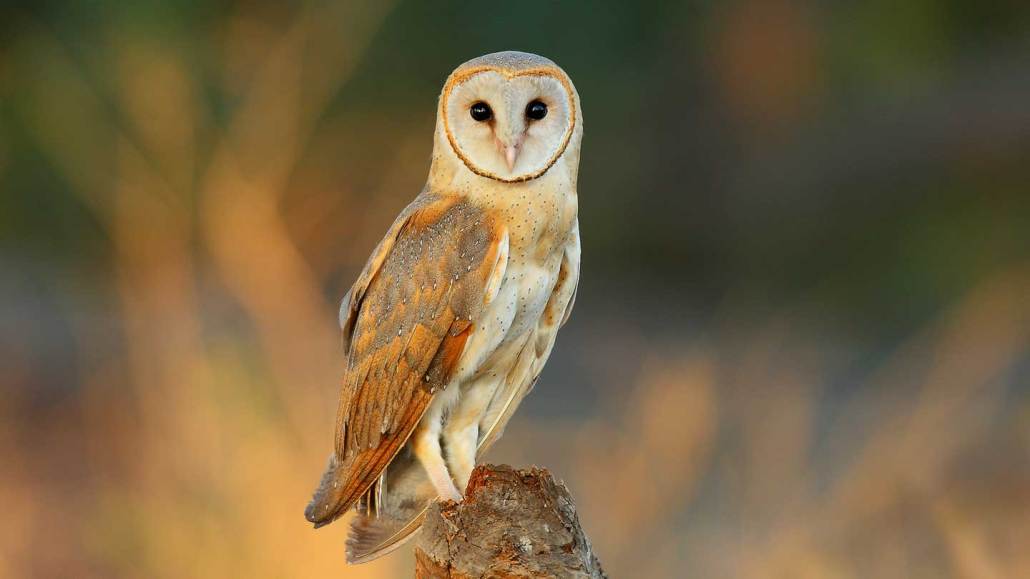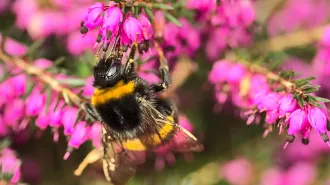Volcanic sulfur may make barn owls grow redder feathers
Exposure to sulfur-rich, volcanic soil appears to encourage the production of reddish pigments

The chest and belly plumage of barn owls (one shown) varies considerably across the globe, ranging from nearly white to a much darker copper color. New research suggests a boost in pheomelanin from sulfur exposure may give the feathers of ones living on volcanic islands a reddish or yellow tint.
zahoor salmi/Moment/Getty Images Plus
Life on a volcanic isle appears to give barn owls a blush of red-brown plumage.
The high-sulfur environment on such islands influences the birds’ coloration, researchers report March 13 in the Journal of Biogeography. Darker feathers might also play a role in detoxifying harmful sulfur-based chemicals or help the owls blend in better with the islands’ humid, shadowy forest backdrop. The findings are among the first evidence that environmental sources of sulfur — such as the soil — can influence the color of integument like fur or feathers.
Barn owls (Tyto alba) are found across most continents and on many islands. The owls’ plumage varies considerably across the globe, with bellies ranging from almost completely white to a much darker copper color.
In 2021, evolutionary ecologist Andrea Romano and his colleagues discovered that barn owls on some islands are paler than mainland populations. “However, such a difference disappears on small and remote islands and archipelagos, where in some cases, owls are darker than the continental ones,” says Romano, of the University of Milan.
The researchers wondered if there was something special about these smaller, more isolated islands that was causing a color pattern reversal in the owls: sulfur. Many of the remote islands are volcanic in origin, with volcanoes loading the air and soil with sulfur dioxide. Sulfur also has a crucial role in the development of some melanin pigments. For instance, pheomelanin — which is biochemically built using sulfur compounds — imparts a reddish hue in vertebrate soft tissues, while eumelanin, which creates blacks and dark browns, doesn’t rely on sulfur.
Some studies have linked sulfur-rich diets or artificial sulfur sources like pollution to plumage and fur color, Romano says. So the team hypothesized that a volcanic environment full of sulfur might encourage the owls to produce more pheomelanin, making their plumage darker.
The researchers examined the preserved, feather-covered skins of more than 2,000 barn owl museum specimens from dozens of island groups. They scored the relative redness of the owls’ belly plumage, finding an average color for each geographic location. On islands with sulfur-rich volcanic soils or recently active volcanoes — such as Sulawesi in Indonesia or the Canary Islands — the owls had darker, redder plumage than those on nonvolcanic islands such as Tasmania, the team found.
The influence of volcanic sulfur on barn owl colors explains less than 10 percent of the color variation, the researchers estimate. Other inputs like genetics play a major role. For instance, one gene called MC1R is responsible for as much as 70 percent of the color variation, says Thomas Kvalnes, an ecoevolutionary biologist at the Norwegian Institute for Nature Research in Trondheim who was not involved with this study.
“Still there is variation left to explain, both within and between populations,” Kvalnes says. “This is where different environmental factors need to be taken into account.”
It’s possible that sulfur-driven colors provide benefits to the owls, Romano says. Volcanic islands are often thick with vegetation supported by dark, fertile soil. Darker feathers might help the predatory owls disappear into their forest surroundings. The owls might also avoid the toxic effect of high sulfur exposure by shuttling a glut of sulfur into making more pheomelanin. Melanin has been previously tied to detoxifying pollutants in sea snakes, for instance (SN: 8/14/17).
Among birds, the connection between plumage color and volcanic sulfur might not be limited to just barn owls. Multiple bird species in Iceland, for example, are getting a pheomelanin boost from environmental sulfur, another group reported February 25 in the Journal of Ornithology. But some of these are migratory birds, Kvalnes points out, which dilutes the link between the local setting and the level of pigmentation.
It’s also possible the volcanic sulfur–pheomelanin relationship is even more widespread in vertebrates. “Studies on different species are highly needed to confirm whether this pattern is general,” Romano says. “Theoretically, however, the same process should apply to at least other birds and mammals.”
Romano is also interested in investigating how the sulfur is moving from the environment into the plumage pigmentation. Is it through the diet? The water? Maybe the air? “We know nothing about how sulfur reaches the soft tissues of this top predator,” he says.






